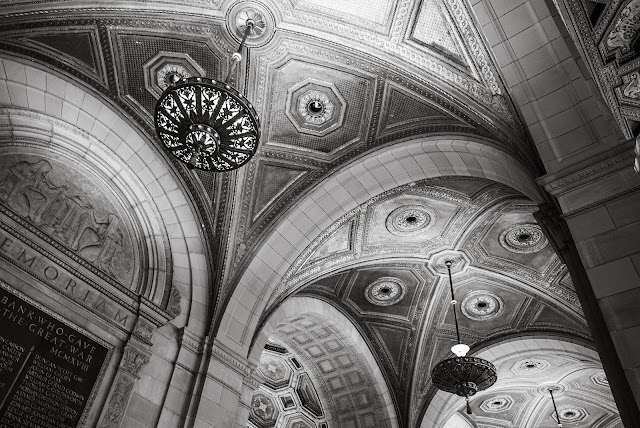Then and now. Medical Technology changes. Photography styles change.
The top photograph is of a medical scanner from around 1992. It was photographed as part of the content for a brochure commissioned by a medical center in San Marcos, Texas. As was the practice back then the image was lit with strobes and some of the strobes were gelled with color filters to add some pop to the image. The gelling was done at the request of the advertising agency. I was using a 4x5 inch view camera and shooting with very slow (ISO 100) transparency film so setting up and lighting the rooms and the monitor took several hours.
We needed to make sure we eliminated every unwanted reflection because it would have been too costly to do so via retouching. Additionally, I needed to make a second exposure for the computer screen on the right hand side of the frame. This was done using a double exposure technique. To do it right we needed to cut a black material to the exact size of the screen. This would block off any reflection on the screen. We then shot the overall shot for the rooms and the machine with one exposure, thenturned out all the lights and made a longer exposure for just the screen (after removing the black material !). Both exposures were on the same piece of film so it was critical not to move the camera between the two exposures.
To make sure we had a frame with a good balance between the flash exposure for the big scanner, the two rooms and the screen I had to bracket through about 12 pieces of 4x5 inch sheet film. It was made even more complicated by the need to shoot at f22 to get everything in good focus. We were using two 2,000 watt second flash power packs but we still needed to extinguish all of the continuous lighting in the frame and trigger six pops of the flashes, at full power, to build the exposure we needed. Of course, in those days there was no tethering and no live view. It was math and experience that helped move the job forward. Polaroid was less helpful in figuring out the right exposures since it suffered from a high level of reciprocity failure compared to conventional films. Shots like the one above could be quite time consuming to get right...
The image below was done a couple of years ago for a different medical practice. It's of a brand new CT scanner that does XX slices which makes it a much more accurate diagnostic tool. We didn't need to show a monitor in the foreground in this case so the entire shot was done in one exposure on one frame in a digital camera. Since this predated my acquisition of digital Leica cameras I'm pretty certain the image was done using a Lumix S1R camera and the 24-105mm Panasonic zoom lens. Of course it was done on a tripod and we were able to chimp to get exactly the exposure and the look that the art director wanted. Additionally we were able to use PhotoShop to lift shadows, control highlights and get the level of sharpness we needed for the final use.
The contrast between the images is pretty obvious. Styles in advertising have changed over time. The rigors of shooting with different formats and on different types of cameras meant that the older photo took hours to complete and needed the power of some powerful lights. The image below was set up and ready in minutes. In fact, the biggest part of this sub-project was just cleaning up the surrounding area and moving trash cans and Post It notes.
To think that we could go on doing the same styles with the same gear over and over again for decades is pretty silly. And no rational business person would willingly attempt to do so. It's good to keep up even if it sometimes means actually buying new gear or trying new lighting techniques. Imagine that!



